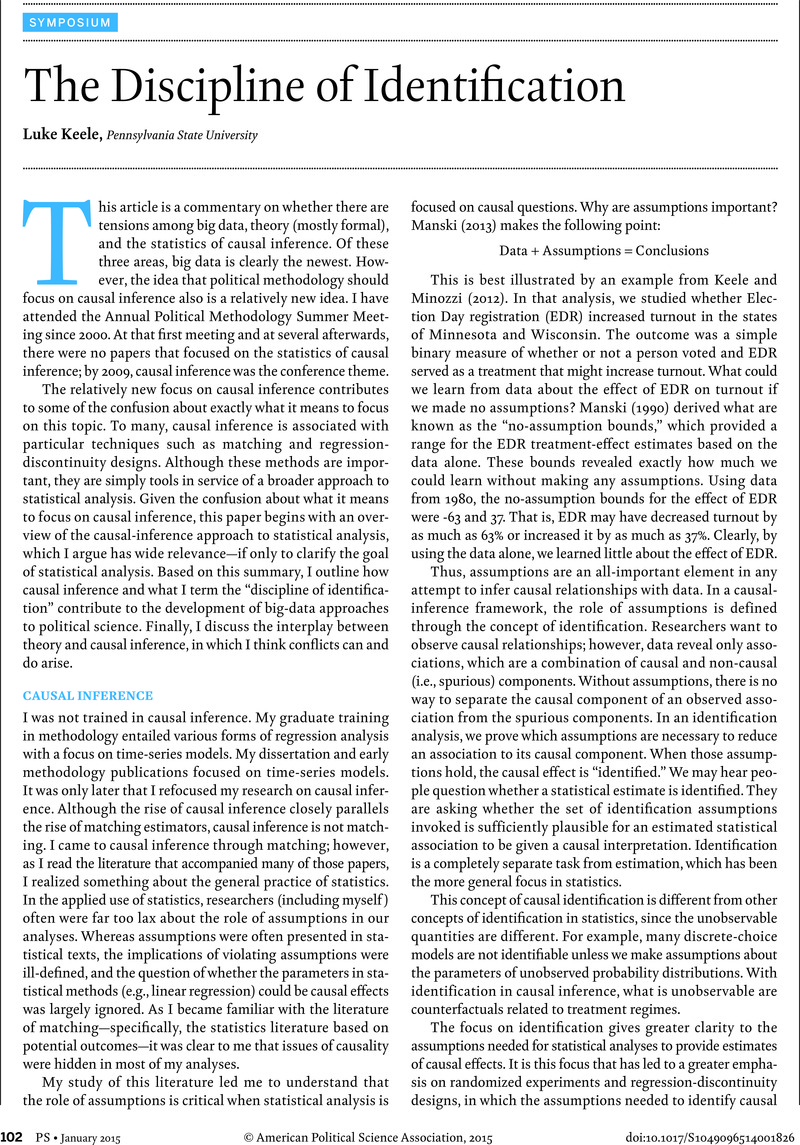Crossref Citations
This article has been cited by the following publications. This list is generated based on data provided by Crossref.
Samii, Cyrus
2016.
Causal Empiricism in Quantitative Research.
The Journal of Politics,
Vol. 78,
Issue. 3,
p.
941.
Pang, Xun
2016.
Shared Challenges and Solutions: The Common Future of Comparative Politics and Quantitative Methodology.
Chinese Political Science Review,
Vol. 1,
Issue. 3,
p.
472.
Brantly, Aaron F.
2018.
When everything becomes intelligence: machine learning and the connected world.
Intelligence and National Security,
Vol. 33,
Issue. 4,
p.
562.
Otte, Gunnar
Sawert, Tim
Brüderl, Josef
Kley, Stefanie
Kroneberg, Clemens
and
Rohlfing, Ingo
2023.
Gütekriterien in der Soziologie.
Zeitschrift für Soziologie,
Vol. 52,
Issue. 1,
p.
26.



